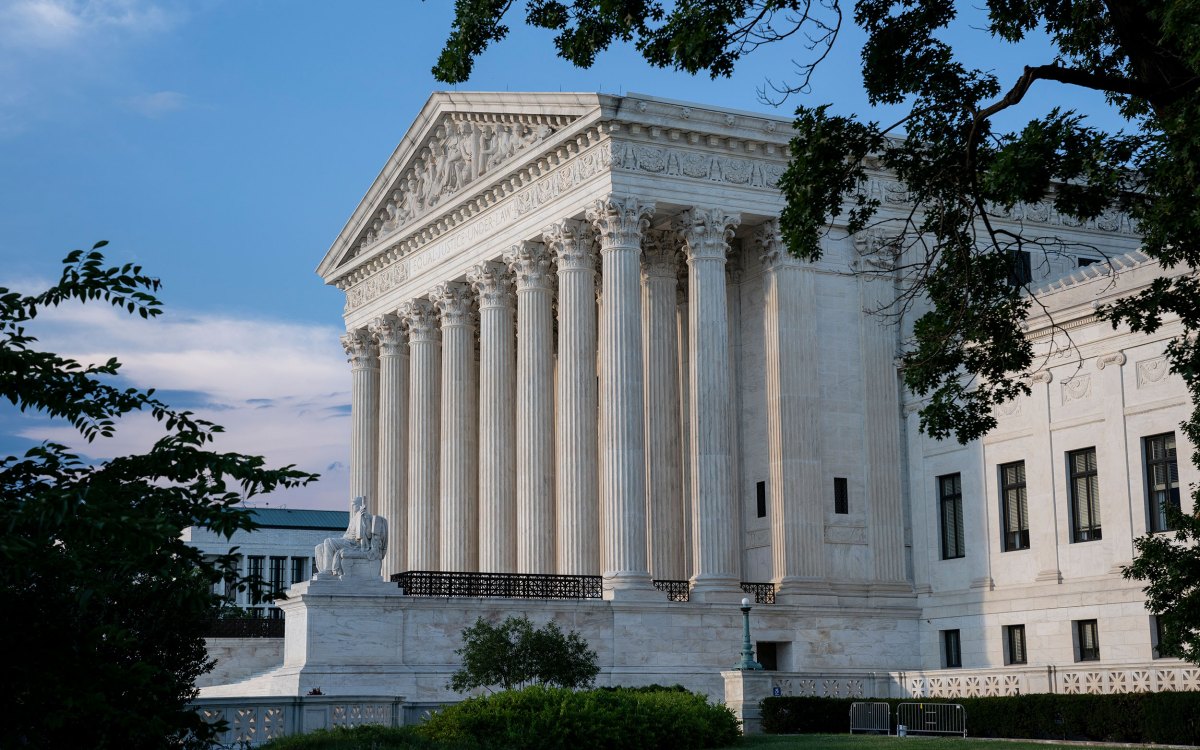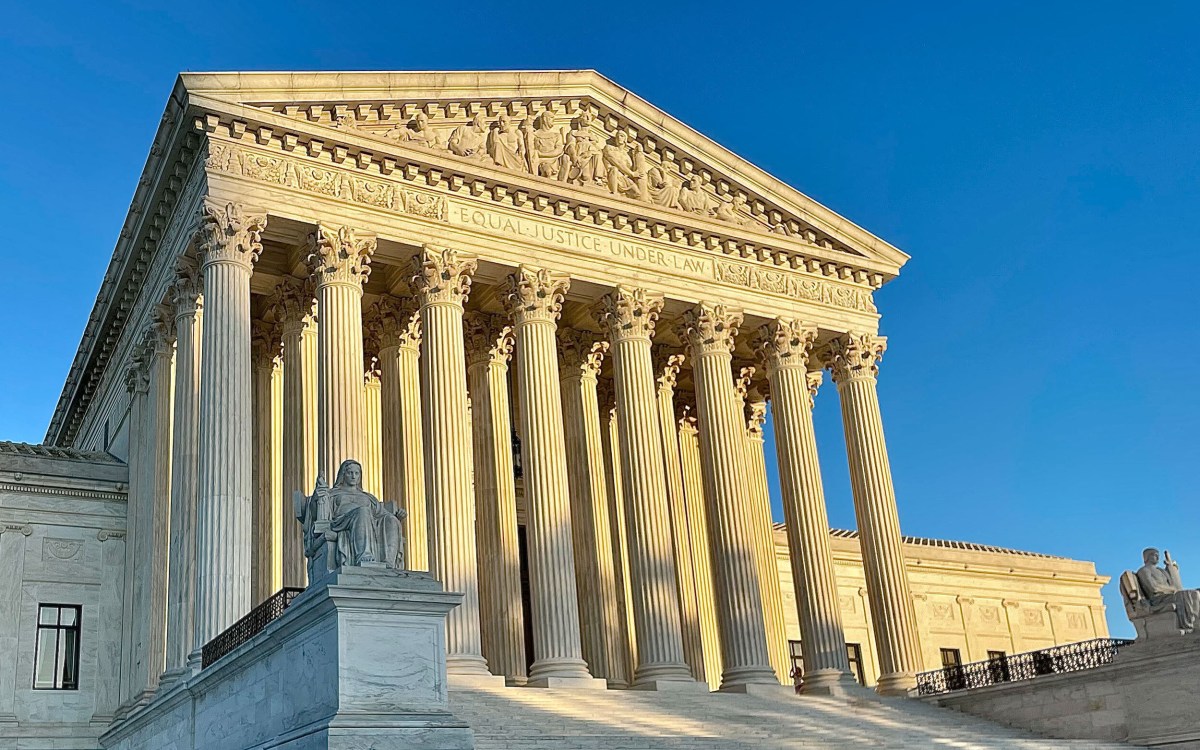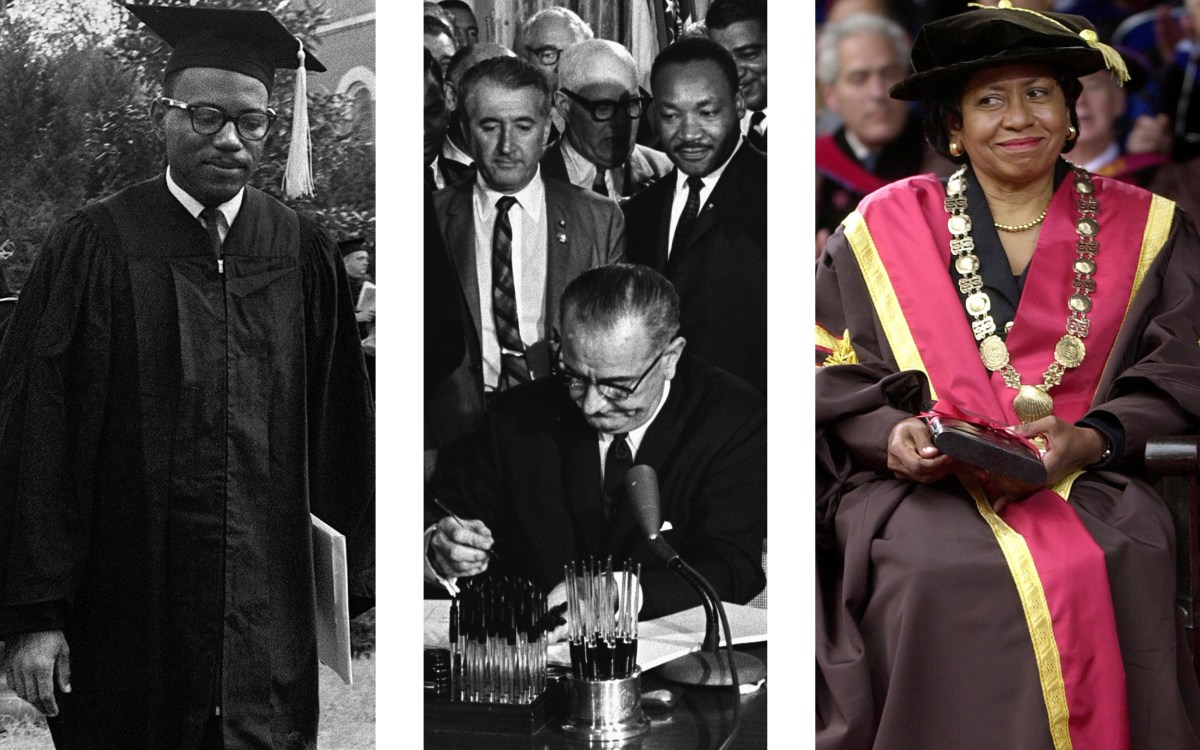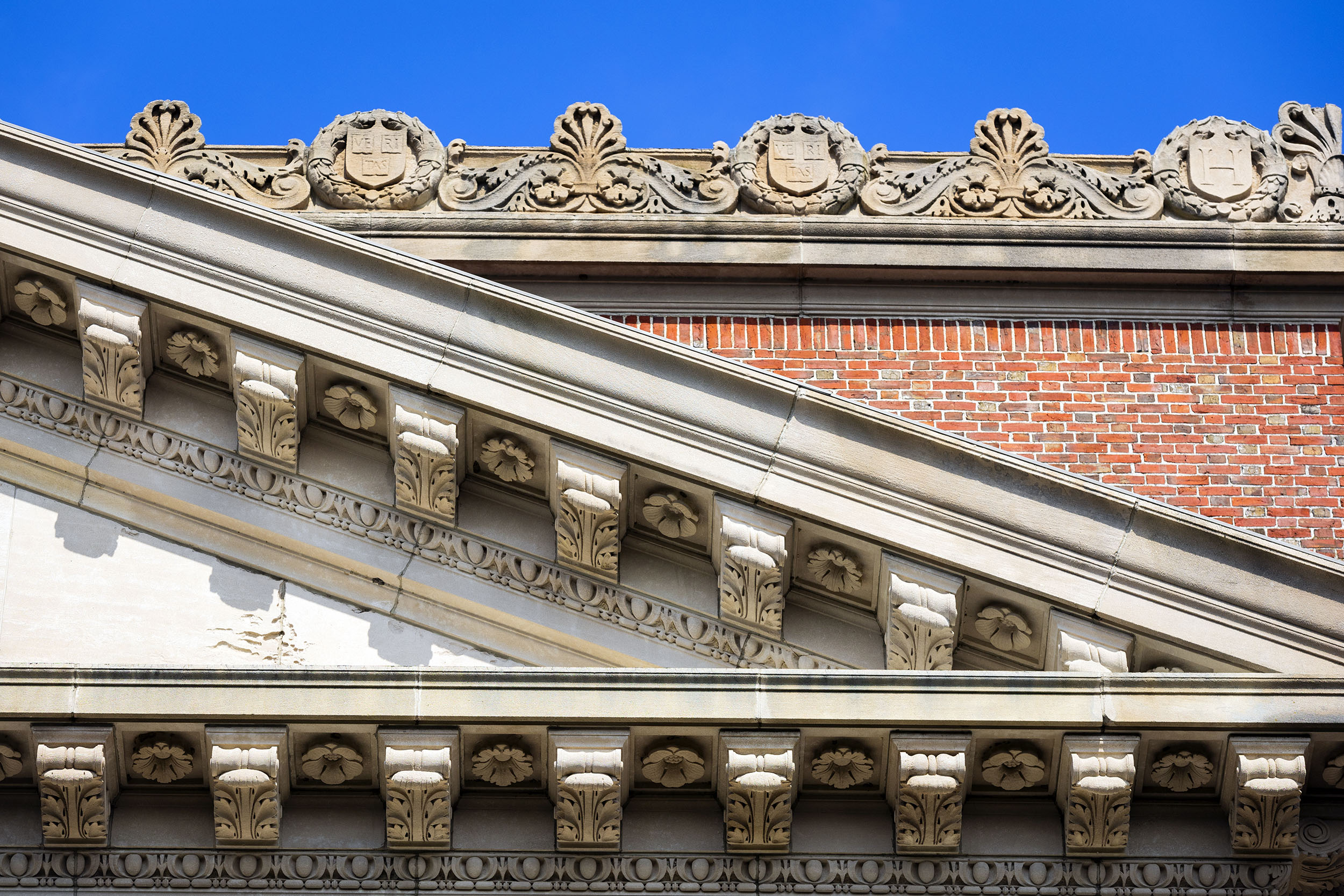
Stephanie Mitchell/Harvard Staff Photographer
Way forward after Supreme Court ruling
Five education scholars examine how admissions processes will change, what it may mean for colleges, universities — and nation itself
Higher education leaders agree it will take months to sort out the implications of the Supreme Court’s decision last Thursday against race-conscious admissions programs at Harvard and the University of North Carolina. It may affect what a college application will look like in the future. But their biggest concerns involve how this will impact the central mission: preparing students for life in diverse national and global communities through promoting equity and inclusion on campus and in society. The Gazette spoke with five education scholars to consider what happens next. Interviews were edited for clarity and length.
What will this mean for higher education?

Meira Levinson
Juliana W. and William Foss Thompson Professor of Education and Society, Harvard Graduate School of Education
“I think it’s important to remember that the majority of students who have access to higher education actually access it through non-selective institutions like community colleges not through institutions that are very or mildly selective. As we think about the implications, it’s important to remember that this really does apply mostly to the small number of institutions that are selective or highly selective. At the same time, that’s not to be discounted because these are institutions that reflect the distribution of power in the United States and around the world and can reinforce or disrupt that system of power moving forward. That is why it is important who gains access to these spaces, what the nature is of the learning that happens in those spaces, and who has the credentials, the networks, and the knowledge gained in these spaces when they go out into the broader world. And that, unfortunately, it’s going to become again more narrow. It is a setback to the aim of having a more diverse leadership class and more thoughtful group of leaders as well.”
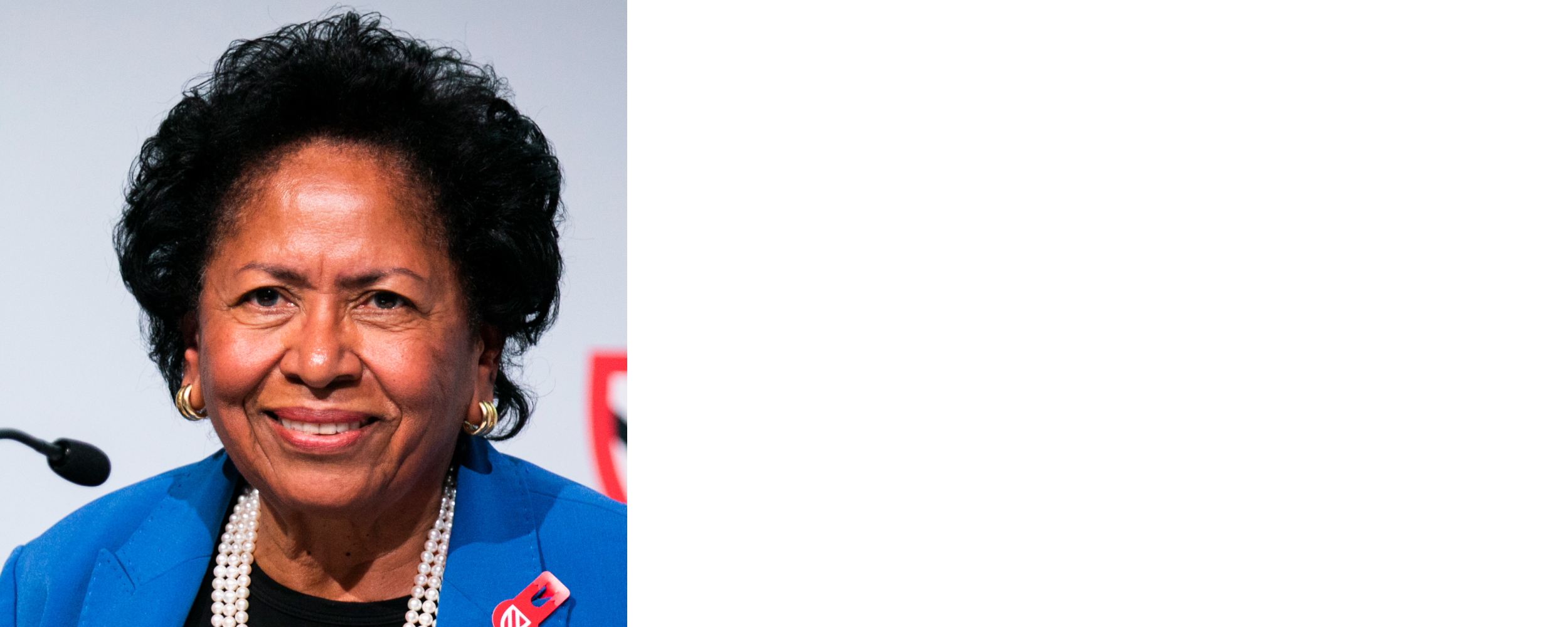
Ruth Simmons
Former president of Prairie View A&M University, president emerita of Smith College and Brown University, and senior adviser to the president of Harvard University on engagement with Historically Black Colleges and Universities
“I think it just means that we need to reshape our approach to achieving fairness across all groups and come up with ideas that will be the next phase of this effort. I sort of regard it that way. We’re entering a new phase of assuring fairness in these admissions circumstances. We just need to go to work and figure out what that’s going to entail.”

Richard Weissbourd
Senior Lecturer on Education, Harvard Graduate School of Education and Harvard Kennedy School of Government
“There will be major losses in diversity on college campuses. Diversity is so important for the prospects of many kids, and it’s also important in terms of having a healthy community, where people learn about themselves and the world.”
How will admissions processes need to change?
“I always say that universities are the ideal place for people to make judgments about intelligence, quality of work, and so forth. And for years, we have relied on proxies instead of our judgment. We’ve relied on test scores. We relied on where the schools that people come from, etc. other than the essential work, which is understanding what people have done before and where that performance in the past leads. My concern is that people won’t have the energy and the courage to tackle this in a way to break apart those tried-and-true measures of judging people.”
— Ruth Simmons
“One of the things that I am concerned about is the increased disparities that we’re going to see between high-achieving young people of color who have access to high-quality guidance counselors or other kinds of college access programs that are going to be able to give them coaching for how they write, in their college essays and supplemental materials, about their backgrounds that will enable the colleges to accept them, and a much broader set of awesome high-achieving students of color who aren’t going to have that access and guidance.”
— Meira Levinson
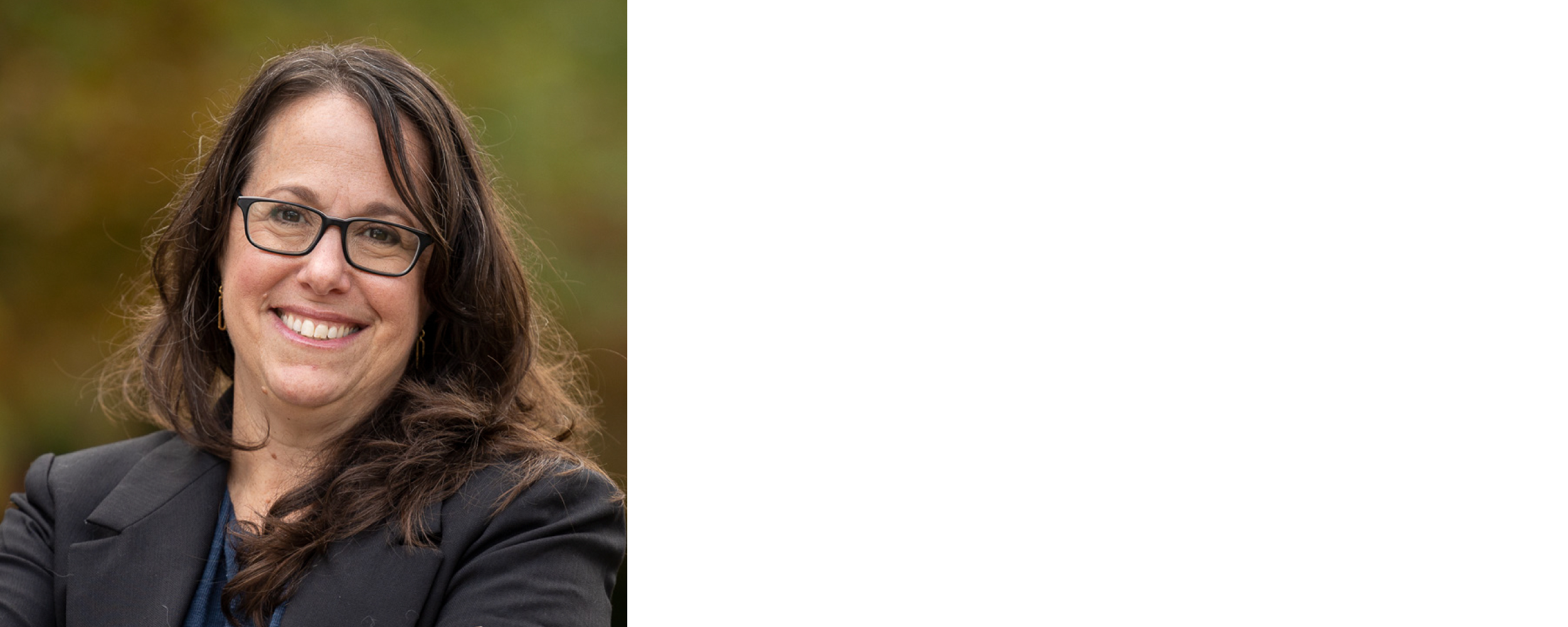
Mandy Savitz-Romer
Nancy Pforzheimer Aronson Senior Lecturer in Human Development and Education at the Harvard Graduate School of Education
“Colleges and universities will need to double down on their commitment to creating a racially diverse applicant and admitted classes, meaning not just admitted classes, but also among those who apply. What that means is that they’ll need to think about how they create applicant pools, and how they message to students that they belong on their college campuses.
“We’re going to see higher ed institutions scrambling to rethink their application process. I suspect others are going to change their essay questions, and they’re going to need to train their faculty for how to understand race in an application. This is primarily going to impact highly selective institutions, which already enroll low numbers of students of Black, Latino, and Native American heritage. From my perspective, colleges and universities are going to need to think about the college search process from much earlier on and figure out ways to reach students at an early point in their thinking about their future.”
“A lot of universities could do more to actively recruit people from many different types of backgrounds and focusing on financial aid. Increasing financial aid is going to be important in many respects. Universities should also be looking at the states where race-conscious programs were banned, like California, and pay close attention to what they’ve done that has worked.”
— Richard Weissbourd

Thomas Kane
Walter H. Gale Professor of Education and Economics, Harvard Graduate School of Education
“Today’s ruling prohibits the use of race for one specific purpose — promoting diversity. Since 1978, the court has never sanctioned the use of race for righting historical wrongs. Yet by writing, ‘Nothing in this opinion should be construed as prohibiting universities from considering an applicant’s discussion of how race affected his or her life, be it through discrimination, inspiration, or otherwise,’ the majority opinion helpfully reopened that question, inviting us to confront the ways racial inequity — in schools, in neighborhoods, everywhere — continues to limit opportunities for so many students. Universities may have lost the ‘diversity rationale,’ but the justices handed them a rationale with greater moral force: a mandate to address the ongoing impacts of racial bias on individual students.”
Will this affect the battle to promote equity and inclusion?
“I am not surprised, but I am feeling sorrow and disappointment. I have confidence that the majority of people in the United States, including the majority of Supreme Court justices, do feel a commitment to some notion of equality and equity. I also understand people’s intuition that making decisions that take race into account seem inequitable because it seems to be sort of giving people privileges or denying them based on something that is arbitrary, which is their racial designation. But I think the ruling is unfortunate for the idea of equity that I think most people do embrace, which is the notion of equal opportunities to make a positive difference and help our society become a more just community, in which there is an increase in opportunity for all. I think this ruling will set that goal back.”
— Meira Levinson
“I work with high school students. I train high school counselors and college access professionals. For me, the largest concern is the implication for high school students, especially students of color. This message potentially, if it’s not mediated by a lot of adults and educators, is going to have a disastrous effect on the college-going aspirations of Black and Latinx students. And then ultimately, that will have an impact on our campuses and on our workforce and our citizenry.”
— Mandy Savitz-Romer



